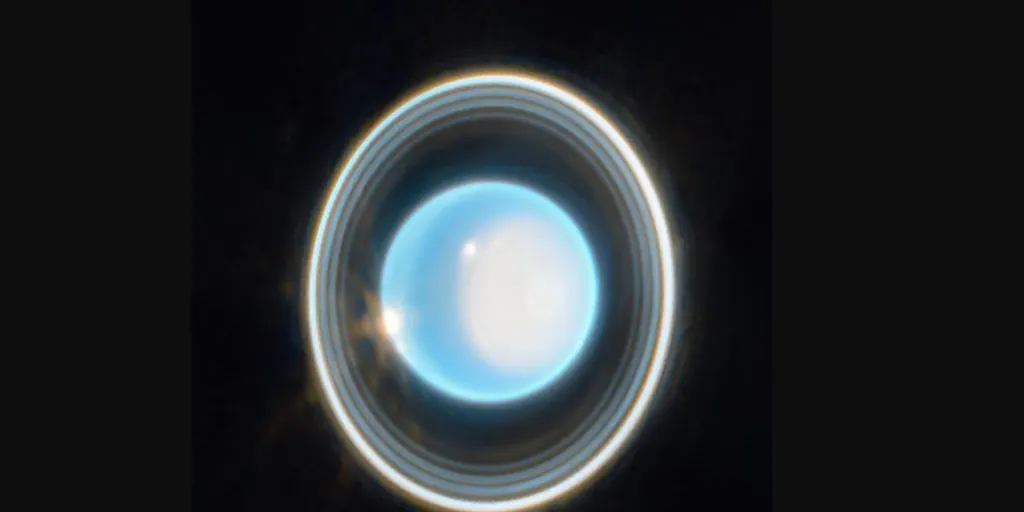The James Webb Space Telescope has captured the best image to date of the rings of Uranus, the penultimate planet in the Solar System. Located almost 3 billion kilometers from the Sun, this small icy world is not often thought of as a ringed planet, mainly because it is too distant from us and faint to be seen from Earth with the naked eye. However, as the Voyager 2 spacecraft discovered in the 1980s, Uranus has 13 rings of ice and dust.
Even through the powerful lens of James Webb, already famous for finding the oldest galaxies and black holes in the universe, only 11 of the 13 known rings are visible. The planet’s two outermost rings are so faint that they were only “caught” by the Hubble Space Telescope in 2007 thanks to the fact that the planet was tilted in such a way relative to Earth that all its rings overlapped, NASA explains.
It will be a few decades before astronomers get another view like that; Uranus is the only planet that spins on its side, rolling around the Sun, like a ball, once every 84 years. That means Earth can only see the rare edge-on view of Uranus’s rings once every 42 years.
Uranus’s unique orbit also means that its north pole, seen in this image as a bright region on the planet’s right side, experiences many years of direct sunlight, followed by as many years of total darkness. It is currently spring for the north pole of Uranus, and summer will arrive in early 2028; meanwhile, the planet’s south pole is tilted into the darkness of space, totally invisible to Earth.
Last September, astronomers already pointed James Webb at Neptune to reveal that it too is surrounded by bright rings that are too faint to see with the naked eye.
While they may appear pure and solid in telescope images like these, planetary rings are actually made of billions of icy rock fragments, some large, others as small as specks of dust. Scientists aren’t sure how planetary rings form, but the process likely began at the same time as the formation of the solar system, when our cosmic neighborhood was a jumble of rocks colliding chaotically with one another.
